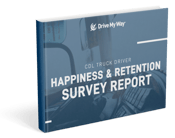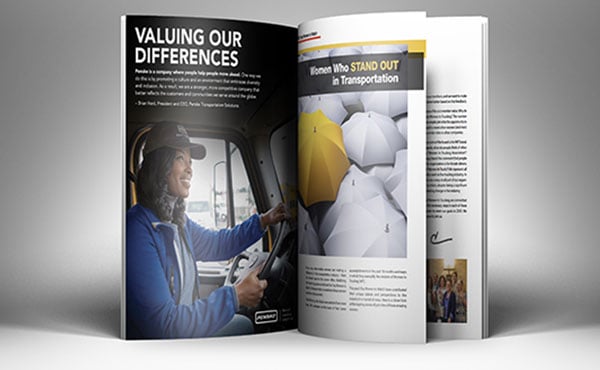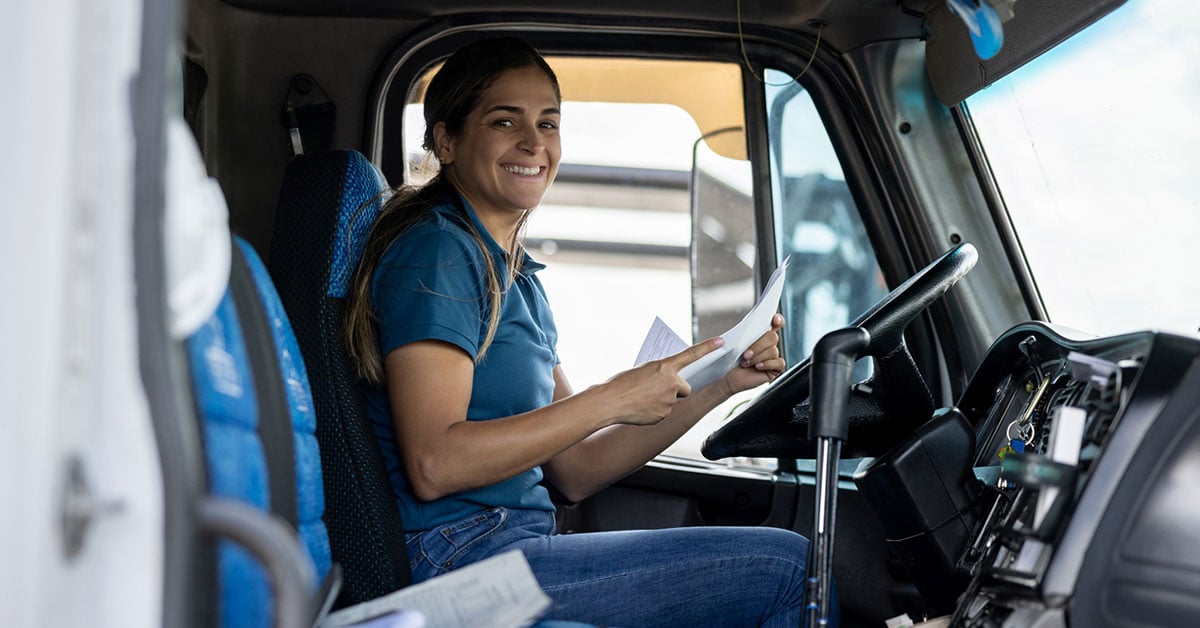Unlocking the Secrets to Driver Happiness
by Women In Trucking Staff, on Jan 24, 2024 8:55:55 AM
Drive My Way Reveals What Fuels Drivers’ Job Satisfaction
 A preliminary Driver Happiness Report was recently released by Drive My Way, a personalized recruiting platform focused on truck drivers and their needs - and even the early results shine a light on how to attract and retain talent in your trucking organization.
A preliminary Driver Happiness Report was recently released by Drive My Way, a personalized recruiting platform focused on truck drivers and their needs - and even the early results shine a light on how to attract and retain talent in your trucking organization.
Drive My Way released a preliminary report to the Redefining the Road magazine from their second survey. The survey, first conducted in 2019, asked over 500 drivers about their happiness with the goal of answering this question: Are professional truck drivers happy at work? The research also explores where happy drivers are likely to be found, how happiness affects drivers’ work and how employers can improve their drivers’ happiness.
The survey represents drivers from a broad range of ages, experience levels and company sizes. Of respondents, 13% total identified as female — almost directly in line with the latest data from the 2023 Women In Trucking Index, which states that 12% of professional truck drivers identify as female.
Why happiness?
 According to Beth Potratz, CEO of Drive My Way, “It’s ironic that in today’s consumer-led job market, we don’t view drivers as consumers themselves. Truck drivers have infinite career options, and too many are not happy with their current job. A truck driver’s life and job are inextricably connected, therefore it’s critical their job fits their needs and preferences so they can live the life they want doing the job they love.”
According to Beth Potratz, CEO of Drive My Way, “It’s ironic that in today’s consumer-led job market, we don’t view drivers as consumers themselves. Truck drivers have infinite career options, and too many are not happy with their current job. A truck driver’s life and job are inextricably connected, therefore it’s critical their job fits their needs and preferences so they can live the life they want doing the job they love.”
The 2023 survey found that only 51% of professional drivers are happy with their current job. And while happy drivers were distributed equally across companies of all sizes, drivers at small companies (that is, companies with fewer than 50 trucks) were twice as likely to be unhappy in their current job as those employed at large companies (more than 500 trucks).
Among all drivers, job satisfaction served as a significant predictor of one of the most crucial forms of employee recruitment: referrals. Happy drivers refer other drivers to open positions at their company at a rate of almost three times those of unhappy drivers. Not only are the happy drivers more likely to refer other drivers to their company, but they are willing to do so multiple times, with some happy drivers indicating that they had referred other drivers to their current company more than five times in the past year.
This data indicates that driver happiness has a ripple effect in a company: when drivers are happy in their work, they naturally become partners with management in the important work of talent recruitment.

How can employers increase driver happiness?
It’s no surprise that driver compensation is a major factor in this conversation, and the data confirms it: When asked about one thing that their employer could do to increase their happiness, the top answer selected? An increase in their base pay.
And while compensation is a significant piece of this conversation, the data tells another important story: communication is key. The second most frequently selected choice that employers could make to increase driver happiness was better communication and listening from management — beating out higher bonuses, better schedules and better equipment.
Hiring managers, take note
Employees new to an organization request better communication more often than anyone else. Of all the drivers who said better communication would improve their happiness, 60% had worked for their current employer for two years or fewer.
What women want
The study reveals another remarkable divide: women were twice as likely as men (19% females vs. 8% males, respectively) to say better communication/listening from management would improve their happiness at work. Inversely, men were twice as likely as women (22% males vs. 11% females) to select an increase in their base pay.
There may be many reasons for this. Women are historically less likely than men to ask for increases in pay in all careers, and that reticence may even be found in an anonymous survey like this. But the data also begs the question: When women only make up 12% of the nation’s professional truck drivers, are their voices being heard?
See the full results of the survey at drivemyway.org/happy, which expands on changes between 2019 to 2023 and other insights critical to employers and recruiters on how to make (and keep) their drivers happy.

This article was originally featured in Edition 3 of 2023 in our official magazine, Redefining The Road. Download the latest edition here.
Like this kind of content?
As a member of the Women In Trucking Association, stay on top of emerging trends and business issues impacting transportation and logistics; learn the importance of gender diversity in the workplace and the need for more women drivers; and see best practices in encouraging the employment of women in the trucking industry. Join today! Learn More







